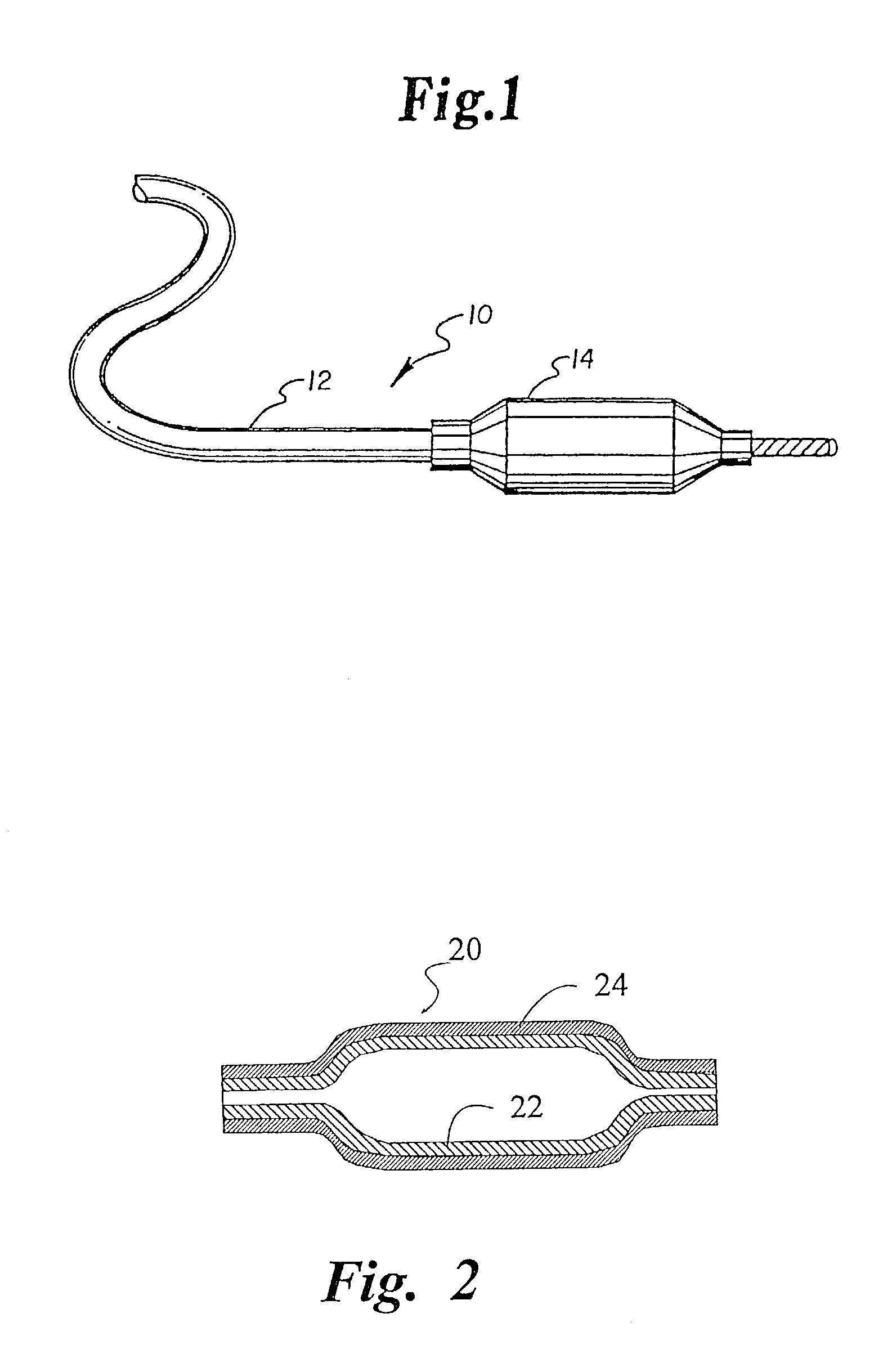Balloons made from liquid crystal polymer blends
a technology of liquid crystal polymer and blend, which is applied in the direction of transportation and packaging, catheter, other domestic objects, etc., can solve the problems of extruded polymer being so brittle that the tubes broke up when handled, and liquid crystal polymer cannot be readily fashioned into balloons for medical devices
- Summary
- Abstract
- Description
- Claims
- Application Information
AI Technical Summary
Benefits of technology
Problems solved by technology
Method used
Image
Examples
example 1
1% LCP Polymer Blend Product
[0049]The products of this example were 5.0 mm diameter balloons. The extruded tubes used had an outside diameter of 0.049″ and an inside diameter of 0.026″. The balloons were formed at approximately 93° C. with approximately 200 psi of forming pressure. The average balloon burst was 340 psi with a double wall thickness of 0.00152″. The average balloon compliance from 4 atm to 12 atm was 1.84%. The average hoops stress of the balloon at burst was 43,113 psi.
example 2
4% LCP Polymer Blend Product
[0050]The products of this example were 5.0 mm diameter balloons. The tubes used had an outside diameter of 0.049″ and an inside diameter of 0.026″. The balloons were formed at approximately 93° C. with approximately 200 psi of forming pressure. The average balloon burst was 327 psi with a double wall thickness of 0.00155″. The average balloon compliance from 4 atm to 12 atm was 1.62%. The average hoops stress of the balloon at burst was 40,931 psi.
example 3
7% LCP Polymer Blend Product
[0051]The products of this example were 5.0 mm balloons. The tubes used had a outside diameter of 0.049″ and an inside diameter of 0.026″. The balloons were formed at approximately 93° C. with approximately 200 psi of forming pressure. The average balloon burst was 364 psi with a double wall thickness of 0.00152″. The average balloon compliance from 4 atm to 12 atm was 1.36%. The average hoops stress of the balloon at burst was 39,560 psi.
PUM
| Property | Measurement | Unit |
|---|---|---|
| melt temperature | aaaaa | aaaaa |
| melt temperature | aaaaa | aaaaa |
| weight percent | aaaaa | aaaaa |
Abstract
Description
Claims
Application Information
 Login to View More
Login to View More - R&D
- Intellectual Property
- Life Sciences
- Materials
- Tech Scout
- Unparalleled Data Quality
- Higher Quality Content
- 60% Fewer Hallucinations
Browse by: Latest US Patents, China's latest patents, Technical Efficacy Thesaurus, Application Domain, Technology Topic, Popular Technical Reports.
© 2025 PatSnap. All rights reserved.Legal|Privacy policy|Modern Slavery Act Transparency Statement|Sitemap|About US| Contact US: help@patsnap.com


